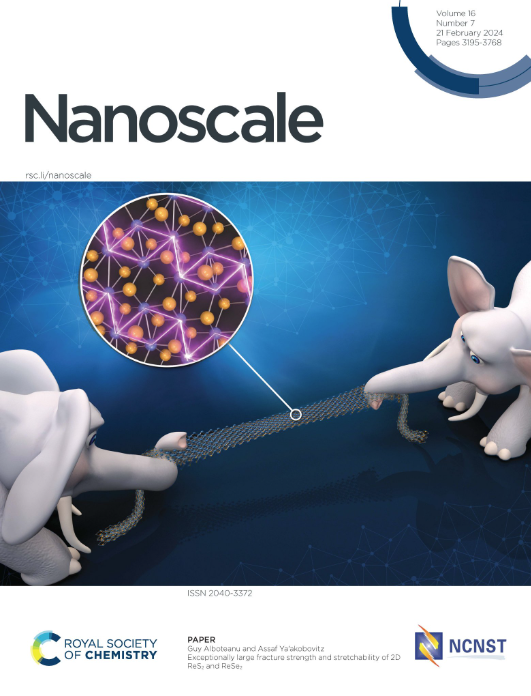Production of synthetic natural gas: a study of nickel catalysts obtained by solid-state combustion of nickel complexes with ethylenediamine.
IF 5.8
3区 材料科学
Q1 CHEMISTRY, MULTIDISCIPLINARY
引用次数: 0
Abstract
Bulk nickel and nickel-alumina catalysts were prepared by solid-state combustion (SSC) from energy-rich complexes that are formed by adding liquid ethylenediamine to solid nickel nitrate at molar ratios of 1 : 2 and 1 : 3. It was noted that the fast gasification of a complex mixed with alumina minimized their interaction; therefore, the main condensed combustion product was nickel oxide, as with the combustion of individual complexes. A study of the obtained nickel-containing catalysts for CO2 methanation showed that a catalytically active phase was formed at temperatures ranging from 250 to 350 °C, even in a reaction medium in the presence of CO2. It was found that after activation, the nickel-alumina catalyst more effectively catalyzed the methanation of CO2 compared to the synthesized bulk catalyst and the industrial NIAP-07-01 catalyst containing ∼2 times more nickel. Indeed, the amount of CO2 converted into methane on the synthesized nickel-alumina catalyst was 1.5, 3, 8 and 9 times higher than on NIAP-07-01 at 350, 300, 250 and 200 °C, respectively. Furthermore, the catalyst synthesized by the SSC method is capable of methanating CO2 even at 150 °C. Its activity does not decrease over time, and it steadily converts about 55% of CO2 into methane at 350 °C for 10 hours.合成天然气的生产:镍配合物与乙二胺固相燃烧制得镍催化剂的研究。
以液体乙二胺和固体硝酸镍为原料,摩尔比分别为1:2和1:3,通过固相燃烧生成富能配合物,制备了大块镍和镍-氧化铝催化剂。人们注意到,与氧化铝混合的络合物的快速气化使它们的相互作用最小化;因此,与单个配合物的燃烧一样,主要的凝聚燃烧产物是氧化镍。对所制得的含镍CO2甲烷化催化剂的研究表明,在250 ~ 350℃的温度范围内,即使在有CO2存在的反应介质中,也能形成催化活性相。研究发现,活化后的镍-氧化铝催化剂比合成的本体催化剂和含镍量约2倍的工业NIAP-07-01催化剂更有效地催化CO2的甲烷化。在350°、300°、250°和200°C时,合成的镍-氧化铝催化剂上CO2转化为甲烷的量分别是NIAP-07-01的1.5倍、3倍、8倍和9倍。此外,用SSC方法合成的催化剂即使在150℃下也能将CO2甲烷化。它的活性不会随着时间的推移而降低,在350°C下持续10小时稳定地将约55%的二氧化碳转化为甲烷。
本文章由计算机程序翻译,如有差异,请以英文原文为准。
求助全文
约1分钟内获得全文
求助全文
来源期刊

Nanoscale
CHEMISTRY, MULTIDISCIPLINARY-NANOSCIENCE & NANOTECHNOLOGY
CiteScore
12.10
自引率
3.00%
发文量
1628
审稿时长
1.6 months
期刊介绍:
Nanoscale is a high-impact international journal, publishing high-quality research across nanoscience and nanotechnology. Nanoscale publishes a full mix of research articles on experimental and theoretical work, including reviews, communications, and full papers.Highly interdisciplinary, this journal appeals to scientists, researchers and professionals interested in nanoscience and nanotechnology, quantum materials and quantum technology, including the areas of physics, chemistry, biology, medicine, materials, energy/environment, information technology, detection science, healthcare and drug discovery, and electronics.
 求助内容:
求助内容: 应助结果提醒方式:
应助结果提醒方式:


